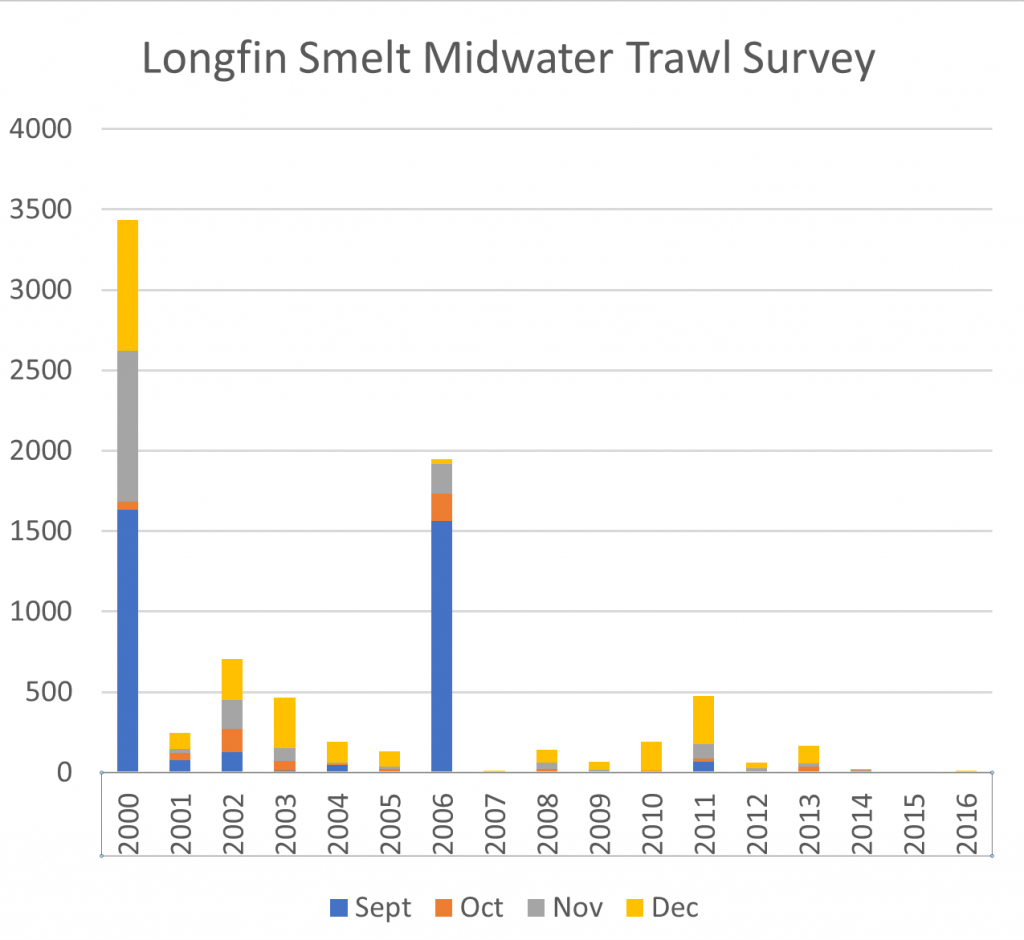The longfin smelt population in the Bay-Delta reached a near record low index in 2016 (Figures 1 and 2). The index was 7, slightly higher than the record low index of 4 in fall 2015. There is a strong positive spawner (fall index two years prior) to recruitment (fall index) relationship (Figure 3). Recruitment is strongly related to the number of spawners (likely the number of eggs spawned). Recruits-per-spawner is also strongly influenced by wet or dry year conditions; in other words, first-year survival is higher in wetter years. The poor fall 2015 and 2016 indices indicate that recruitment in 2017 and 2018 is likely to continue at record low levels. Adult longfin (presumably some two-year-old spawners) were collected in the Bay trawl survey in December 2016. Mid-January 2017 larval smelt surveys will be the first indication of recruitment into the population in 2017. Water year 2017 has been a wet year to date, so some positive response in recruitment could potentially occur.
We will be keeping a close look at longfin recruitment in 2017, especially with new less stringent export restrictions mandated in recent legislation for the implementation of the two federal biological opinions that apply to Delta water project operations. So far, no adult longfin have been collected in salvage at the south Delta export facilities.

Figure 1. Longfin smelt Fall Midwater Trawl indices 1967-2016. Source: CDFW.

Figure 2. Longfin smelt Fall Midwater Trawl indices 2000-2016. (Note: 2007=13; 2015=4; 2016=7) Source: CDFW.

